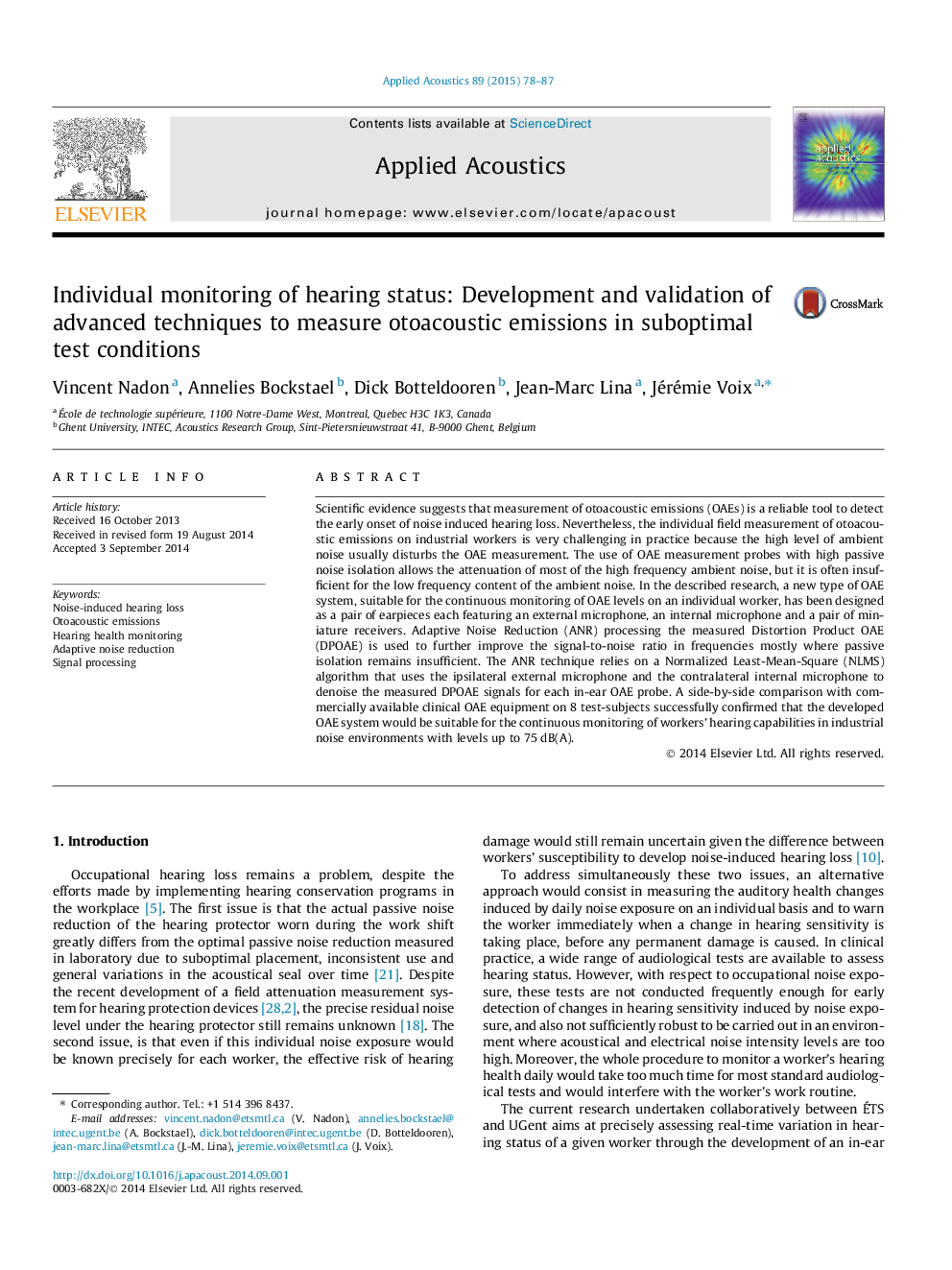| Article ID | Journal | Published Year | Pages | File Type |
|---|---|---|---|---|
| 7152695 | Applied Acoustics | 2015 | 10 Pages |
Abstract
Scientific evidence suggests that measurement of otoacoustic emissions (OAEs) is a reliable tool to detect the early onset of noise induced hearing loss. Nevertheless, the individual field measurement of otoacoustic emissions on industrial workers is very challenging in practice because the high level of ambient noise usually disturbs the OAE measurement. The use of OAE measurement probes with high passive noise isolation allows the attenuation of most of the high frequency ambient noise, but it is often insufficient for the low frequency content of the ambient noise. In the described research, a new type of OAE system, suitable for the continuous monitoring of OAE levels on an individual worker, has been designed as a pair of earpieces each featuring an external microphone, an internal microphone and a pair of miniature receivers. Adaptive Noise Reduction (ANR) processing the measured Distortion Product OAE (DPOAE) is used to further improve the signal-to-noise ratio in frequencies mostly where passive isolation remains insufficient. The ANR technique relies on a Normalized Least-Mean-Square (NLMS) algorithm that uses the ipsilateral external microphone and the contralateral internal microphone to denoise the measured DPOAE signals for each in-ear OAE probe. A side-by-side comparison with commercially available clinical OAE equipment on 8 test-subjects successfully confirmed that the developed OAE system would be suitable for the continuous monitoring of workers' hearing capabilities in industrial noise environments with levels up to 75Â dB(A).
Related Topics
Physical Sciences and Engineering
Engineering
Mechanical Engineering
Authors
Vincent Nadon, Annelies Bockstael, Dick Botteldooren, Jean-Marc Lina, Jérémie Voix,
